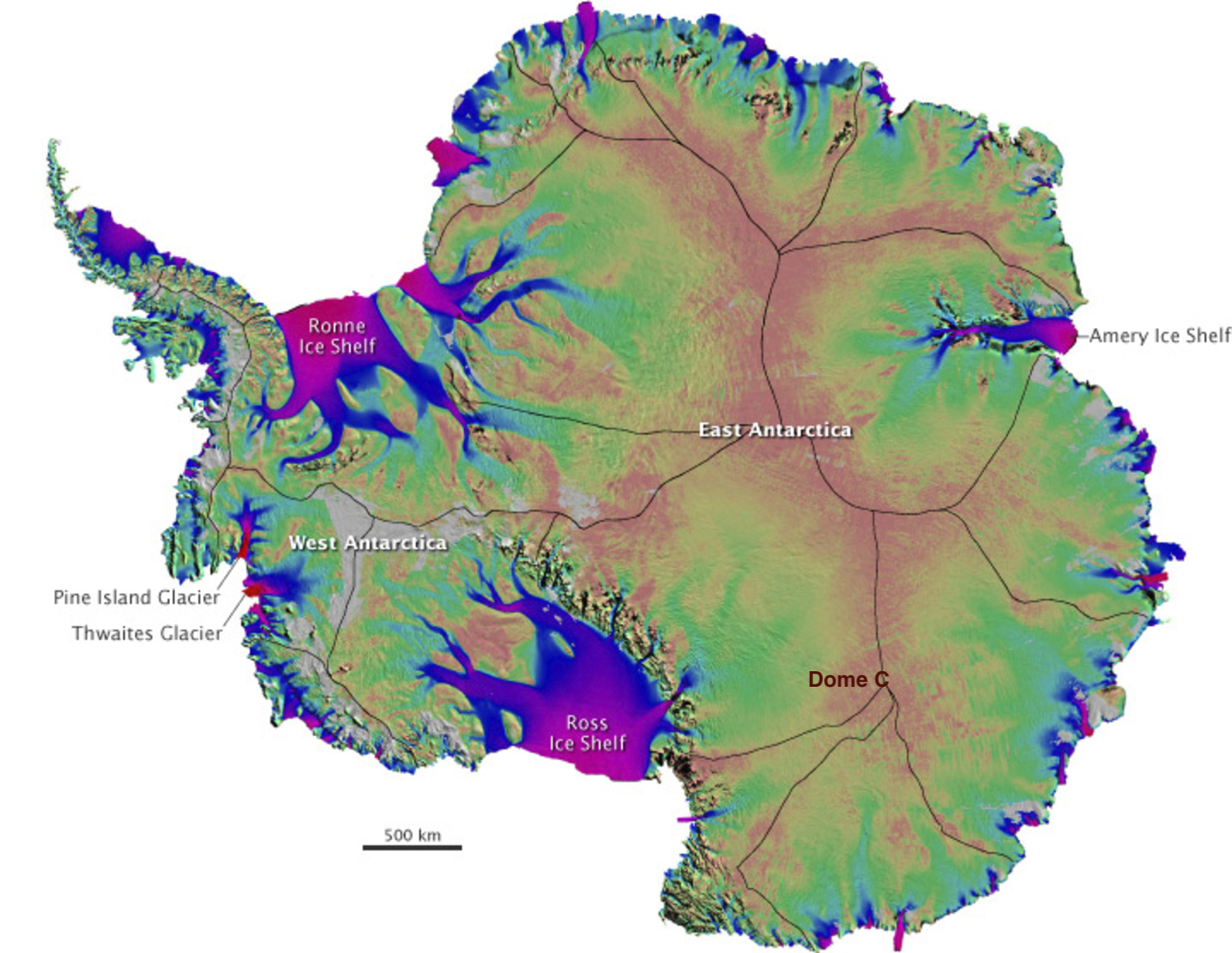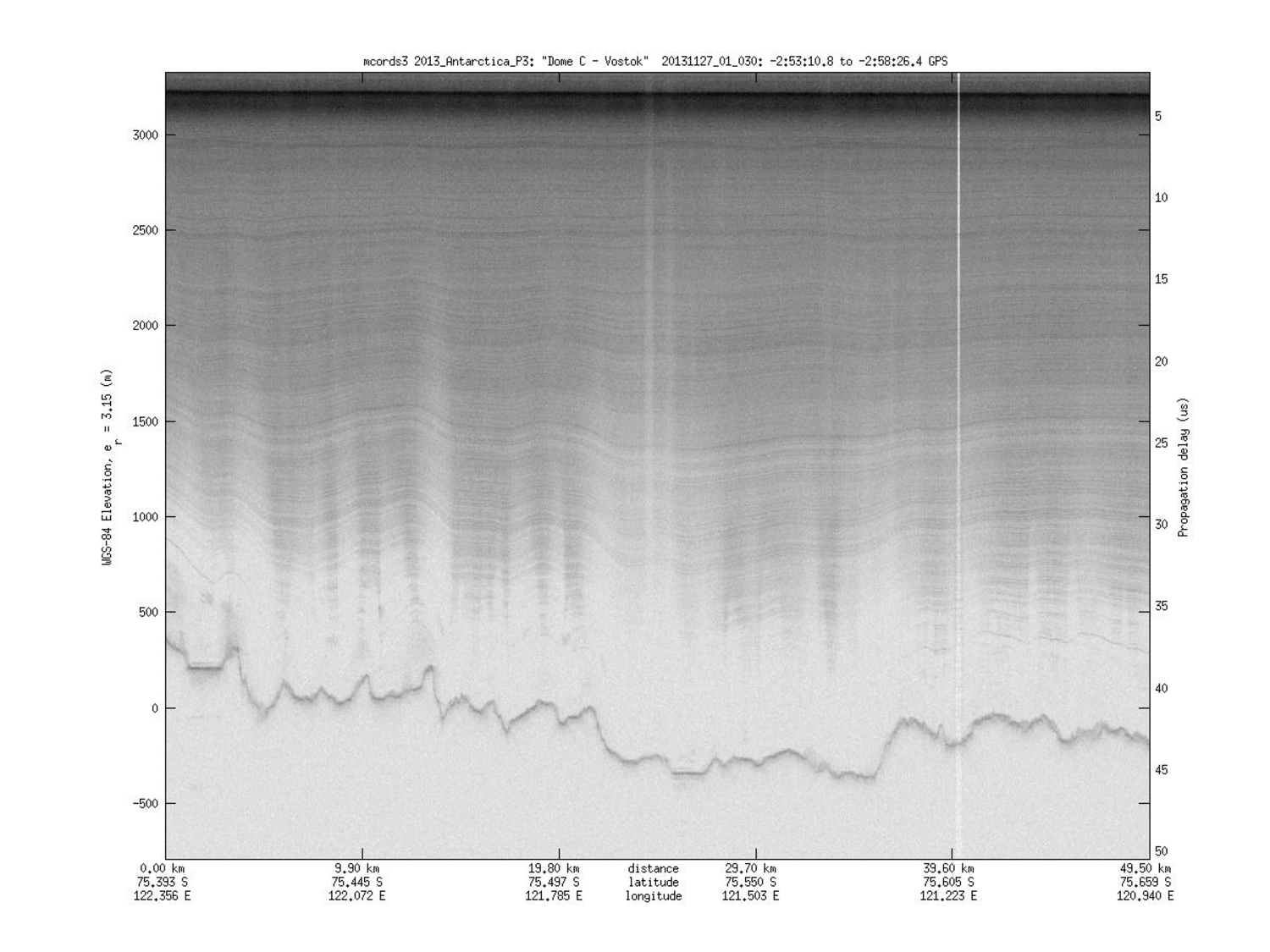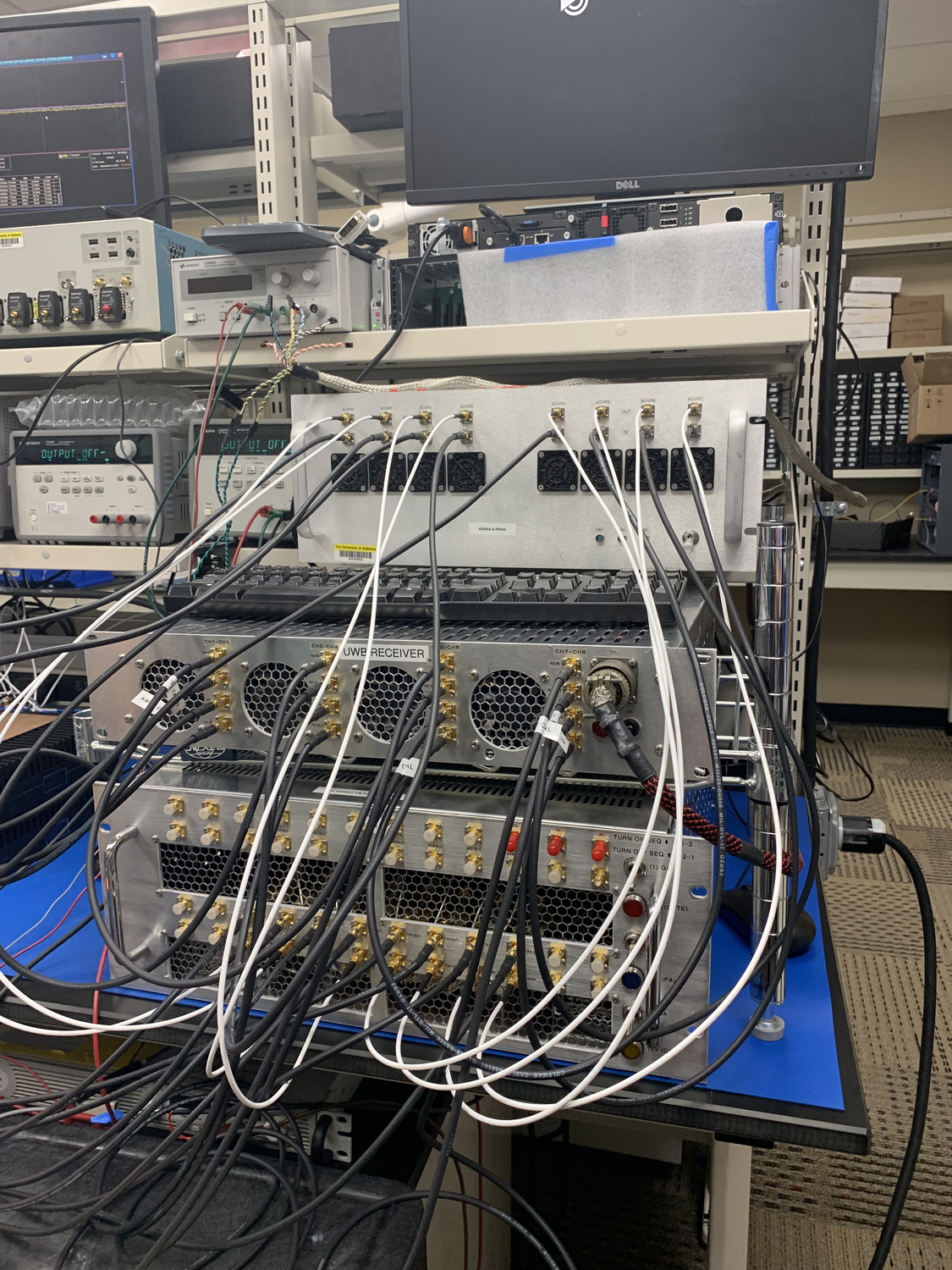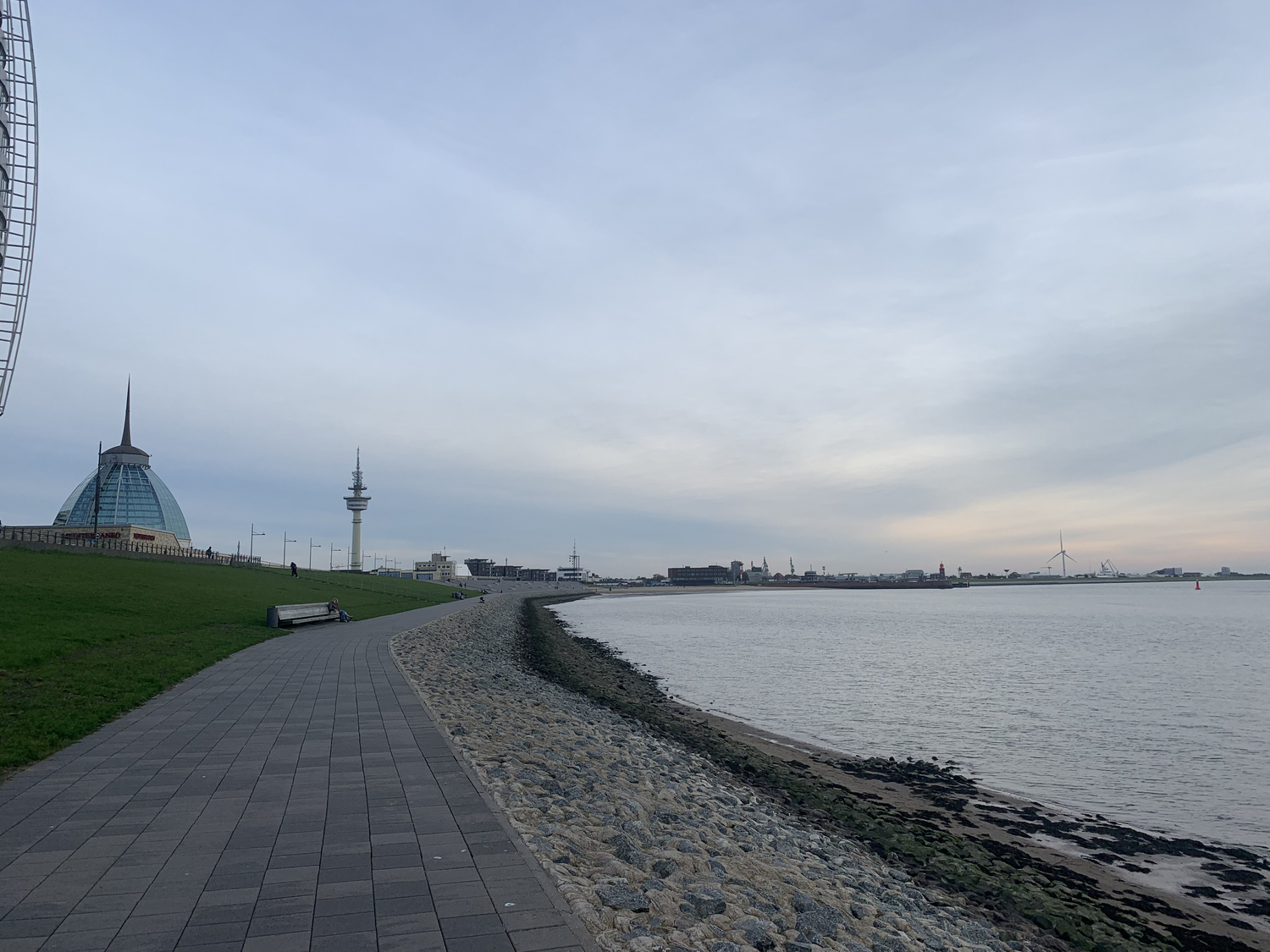Heading to Little Dome C
I’m really excited to get to be a part of the final surveys for selecting the site of the Beyond Epica Oldest Ice core.
The Project
Beyond Epica is looking to drill an ice core containing a continuous 1.5 million year climate record, 700,000 years longer than exists presently. Such a core will hopefully let us access important scientific mysteries, like why there was transition in the frequency of glacial cycles 1 million years ago. Most of the selection of the core site has already been done–the site will be near Dome C, where the current oldest core was drilled, approximately south of Australia. The target site has been named Little Dome C, and there are a few small targets which we will survey in detail to try to help with the final site selection.
My role
We are bringing new, highly sensitive ice-penetrating radars produced by the Remote Sensing Center at the University of Alabama. We will have multiple state-of-the-art systems, each with the capability to sound through 3 km of ice and resolve small layers (less than a meter) which reflect weakly. More on why we need such sensitive radars below…
The logistics of getting our 3-person, 3-nations of residence team to Dome C rather complicated, mainly since we are funded through multiple countries and taking advantage of support from both the US and the French/Italian programs. The US program is providing the logistics to Antarctica, which means that we will fly with the US Air Force from Christchurch to the main US base at McMurdo. After mandatory trainings, the US will fly us to the French/Italian station at Dome C, from where we will traverse to Little Dome C. Coming home is the reverse, but flying with the Italians down from Dome C, and plus or minus a stop at the Italian Mario Zucchelli station on the way back to catch our US flight out of McMurdo.
Why Little Dome C
Selecting the site for an ice core balances a number of somewhat conflicting goals; sometimes we seek old records, sometimes we seek high-resolution records (meaning that each year’s snow accumulation is preserved in a thick packet). To a certain extent, these considerations oppose each other since if we have high resolution that means we have thick parcels of ice for each year while for long records we would want thin parcels to pack in more years’ of information. If we just focus on the length of record, we are looking for thin annual layers, which sends us to the Antarctic Plateau, where only a little snow (equivalent of about 5 cm of ice) falls each year.
The next consideration is where to go relative to ice flow; we want a continuous record, layered up like a cake. Oldest ice should be at the bottom, youngest at the top, and no jumps or reversals in between. Besides this nice layering, we want to know where the ice came from. Perhaps surprisingly, there can be significant disturbances, even large overturned folds, in the ice, which would prevent easy dating of the ice core and thus hinder its use as a climate record. Ultimately, deep ice cores are used to learn about past climate, and as you can imagine it is much less useful to know things like temperature without knowing where that temperature was measured. So, we often drill long climate records at or near ridges and domes, areas where the ice moves little side-to-side. Much of the Antarctic interior fits this bill, since there are several large domes and connecting ridges where ice is flowing slowly.

Ice velocities in Antarctica, from Rignot et al., 2011 via NASA's Earth Observatory. Tan colors indicate slow ice, generally desirable for ice cores.
Another major consideration for ice coring is whether the ice is melting at the bed. Thick ice generally insulates the deep ice, so even in locations where the surface temperatures average around -55 C, the ice 3 km down at the bed can be melting. Basal melt is clearly not desirable for old ice; if old ice is at the bottom, then melt removes that exact record. So, counter-intuitively, given the same surface temperature and snow accumulation, the thickest locations are not expected to hold the oldest ice. We still want the ice to be pretty thick, so that it preserves enough of old ice for us to measure, but we want it to be thin enough not to melt at the bed. In the region of Dome C, models indicate that the freeze/melt transition should happen around an ice thickness of 2700-2800 m, so we want some ice that is safely thinner than that. Luckily, this exists at Little Dome C, and thus the target of drilling there.
However, since it is off the true dome, and since the dome could have moved in the past, there is some consideration of whether the stratigraphy (layering of the ice) is clean. Previous ice-penetrating radars used in the area did not see layers in the ice near the bed. It is not fully known whether these radars saw nothing because there was nothing to see (for example the ice has flowed too much and has erased all layering) or whether they simply did not have sufficient sensitivity to see the weak, closely spaced reflections coming from those depths. With our brand new instrumentation, moving relatively slowly behind a snowcat and thus allowing greater data volume per distance, we should be able to see anything that is there. Hopefully, armed with new knowledge of the stratigraphy, the committee in charge of the new ice core can confidently select a spot where there will be really old ice.

Radargram from near Dome C acquired by the University of Kansas MCoRDS instrument on NASA's Operation Ice Bridge. Note nice layering at shallow depths compared to the white area above the strongest dark reflection, which comes from the bedrock.
Preparations
I’ve spent much of the fall preparing for this upcoming season. I spent two weeks in Tuscaloosa, AL, to get familiar with the new hardware and start to understand the unique processing considerations. I also spent a week in Bremerhaven, visiting the Alfred Wegner Institute and making sure that we are set up to quickly process the results in the field. It is exciting to get to travel and work with collaborators, but it is also nice to now be back enjoying Autumn in Copenhagen.


